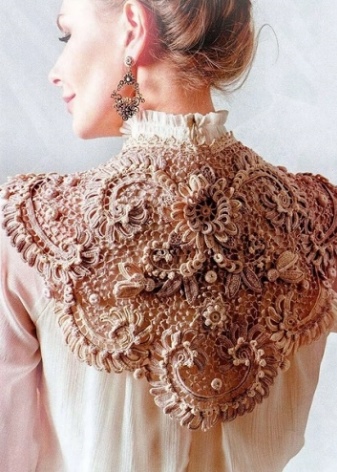All about Irish lace
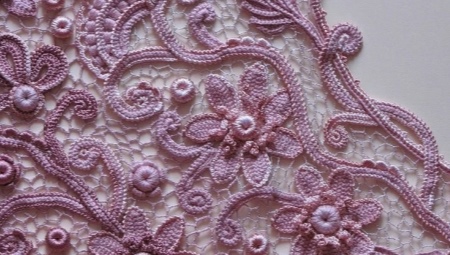
From time immemorial, representatives of the beautiful half of humanity have tried to decorate their homes and took care of the beauty of their outfit. In this matter, they were helped by various types of needlework, which have changed and improved over time.


One of the most famous ways to create a unique wardrobe item or gracefully complement an existing garment is crocheting. A great many craftswomen around the world devote a considerable part of their time to this craft, and also develop new weaving techniques. Let's turn to making Irish lace.

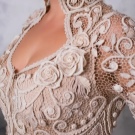
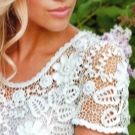


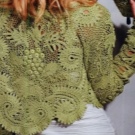
Peculiarities
Irish lace is understood as a crochet technique that came to us from antiquity, which is currently undergoing some changes. If previously a thin needle and muslin were used to knit weightless patterns with Irish motifs, now women are turning to a crochet hook and thicker threads.
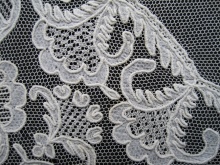

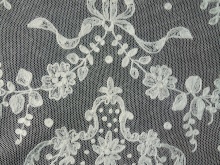
There is no doubt that the introduction of a new item accelerated the knitting process, but the resulting products have lost their former lightness. Today, a huge number of different techniques have mixed with each other and have lost the individuality that they were initially awarded.
The technique of Irish lace has also undergone a lot of changes.
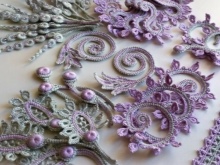
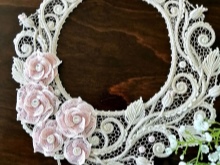

Let's take a look at the key features that set the true Irish weaving tradition apart.
- A huge number of plant motifs that are connected either according to traditional patterns or according to the author's innovations.
- These motifs are most often connected together not seam to seam, as in other methods of knitting, but with a net, although fastening close to each other is quite common.
- The final product does not have any darts, any additions, so the net and the floral motifs fixed on it naturally fall on the body.
- It is extremely difficult to dissolve an already knitted product. That is why it is important to check the pattern several times and strictly observe all the marks in the process.
- Knitting using the Irish lace technique requires much more effort, time and creative energy than other techniques.
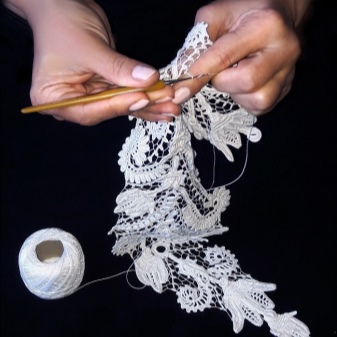
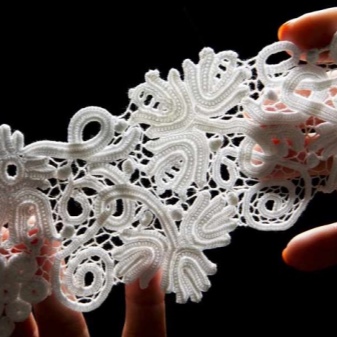
And also a number of signs stand out by which you can distinguish a product made by an experienced craftsman from what came out of the hands of a person who is just beginning his acquaintance with Irish lace.
- The smaller the performance, the natural motives are woven, the higher the level of mastery of their author can be assessed.
- If a woman masterfully manages a thin hook, and the thickness of the canvas she uses is not so great, then this is also a sure sign of her skills in this area.
- A lot can also be determined by the intricacy of the pattern: the more diverse the flowers and plants, the higher the level of the craftswoman's potential.

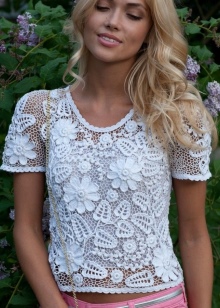
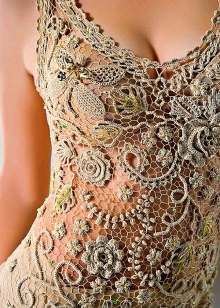
The technique we are considering is fundamentally different from the knitting methods familiar to many needlewomen in one important feature. If the product is usually knitted entirely or assembled into one of the large parts (front, back, sleeves), then in the case of Irish lace, first work is done on individual motifs, be it flowers or various curly patterns, and then the general canvas is “built”.
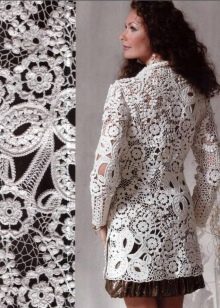
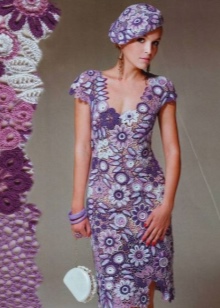
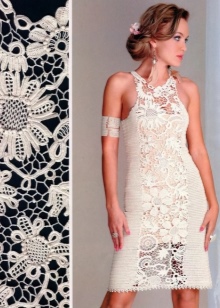
This way of working has both advantages and disadvantages. An indisputable advantage is the scope for the author's imagination, that is, you choose a certain pattern, but its "filling" depends solely on the imagination, available materials. Here it is important to find the artist within yourself and let him float freely. Moreover, from those motives that you like, you can make any product, be it a napkin, panama hat, decorative adornment, cardigan.
It should be noted right away that if we are talking about elements of clothing, then you need to take care of the presence of a lining, since the product will turn out to be transparent. The tricky aspect of Irish lace is that there are a lot of individual pieces that need to be joined together.
Not only is this truly time-consuming work, it is also important to think over the aesthetic part of the issue in advance, to create a harmonious composition.


How to choose a yarn?
In order to create a unique fabric using the Irish lace technique, you need to turn to at least two types of yarn. The thicker one is used for making motifs, and the thinner one is suitable for creating a mesh where flower blanks are attached. An important feature of motives should be their ability to keep their shape. Otherwise, an attractive composition will not work. It follows from this that synthetics need not be considered. Pay attention to the classic cotton options. Mercerized cotton with parameters of 100 grams by 500 meters is perfect.
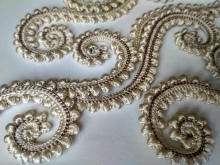

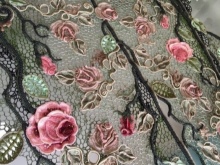
As for the mesh, here you need to use the thinnest threads - it should look as airy as possible. The optimal performance of such threads is 100 grams per 1000 meters. For weaving all kinds of laces, which are also an integral part of Irish lace, threads with an indicator of 100 grams by 800 meters are usually used.
Many experts, having long experience working with various kinds of yarns, argue that, according to a number of indicators, the YarnArt brand thread is the most suitable for the Irish lace technique.
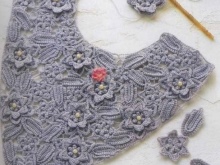
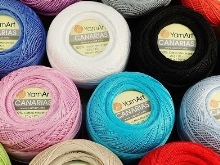
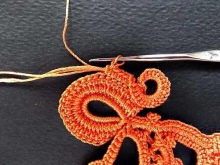
How to read diagrams?
Learning to read patterns is the first step in mastering the Irish lace technique. This is extremely important, because without the skill of understanding these complex drawings, you will be limited by the framework of certain motives and will not be able to move forward and improve your skills. So, the first step is to find the circuit you like. In the modern world, this can be done without difficulty. And you can also find a lot of interesting things if you look through old grandmother's books and knitting magazines. Next, arm yourself with a pen and a piece of paper and start redrawing the diagram, imagining that you are doing work with a crochet. Sometimes you can find schemes where arrows indicate the direction of movement, which, of course, would be convenient for novice needlewomen.
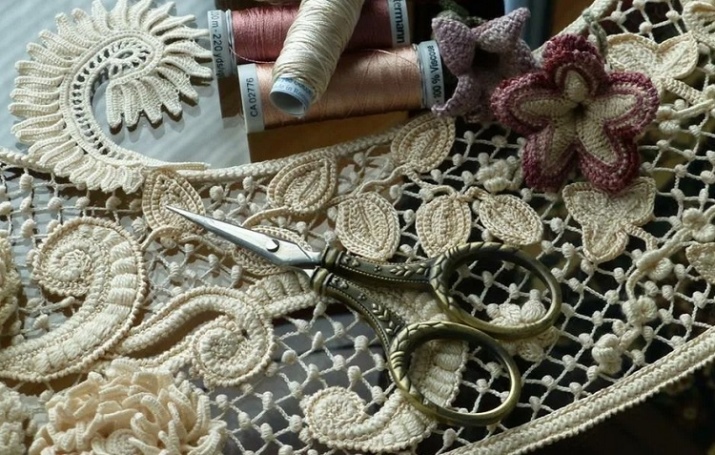
From experience it is known that if a ring or a semi-ring is found on a diagram, then most often it is from this that the knitting of this motif begins. Tinker with knitting a few pieces from the pattern that you liked the most. Start from different points, and you will understand which option is optimal for you. In any case, you cannot do without the advice of experienced craftswomen.
Pay attention to the recommendations of experienced needlewomen, and over time you will develop your own habits, observing which you will create knitted elements indescribable in their beauty.
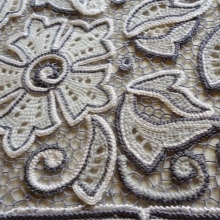
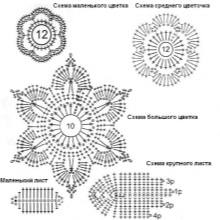
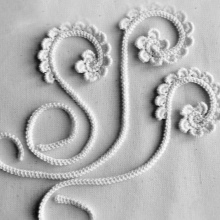
Main elements
As mentioned above, the description of the technique of knitting Irish lace cannot be imagined without plant, floral motifs. That's why most often on such products there are luxurious roses, cutest butterflies, tiny berries, voluminous patterns that resemble beautifully lying fern leaves. All of these elements are attached to the so-called irregular mesh base to create Irish lace. It is knitted with air loops and columns with 2-3 crochets. The shape of the resulting cells can be quadrangular and pentagonal, but triangles are best avoided.
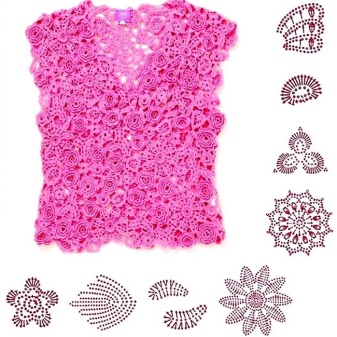
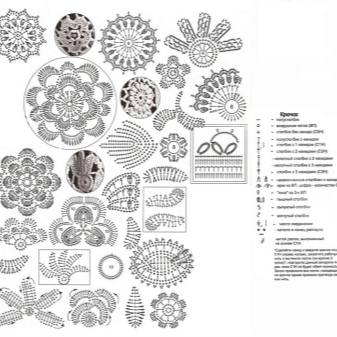
Professional knitters recommend using tailor's pins when creating an irregular mesh. After you have tied one cell, fix one of its corners with such a pin to a special tablet, and then it will be easier for you to continue working on the next cell. Next, let's look at how wide a variety of motifs can be placed on the resulting grid.
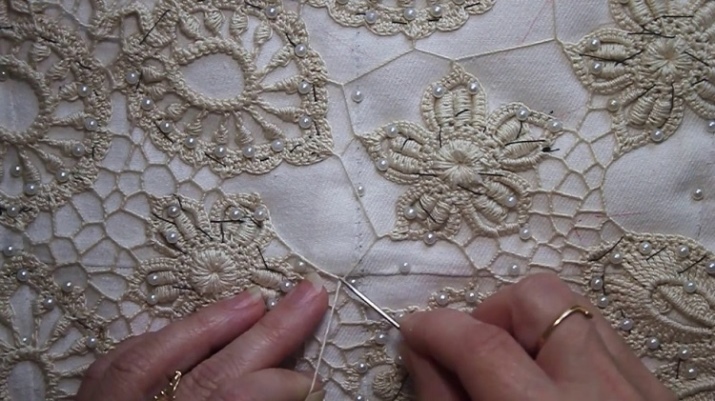
Flower
In books and manuals on knitting and not only you can find many examples of colors that can be used to decorate Irish lace, creating a truly unique canvas that can conquer others.
Absolutely any flower can be taken as an inspirational material, in any of its conditions: open or still unblown, with different colors of petals, with interesting blotches on the leaves. Anything that your imagination is enough for can be invented, even if it does not exist in nature.


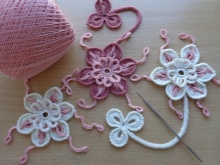
Twig
For knitting twigs and flower stalks, they usually refer to a cord called "caterpillar". It is possible to make a border edge of the neck out of it, or to adapt it as an independent element.
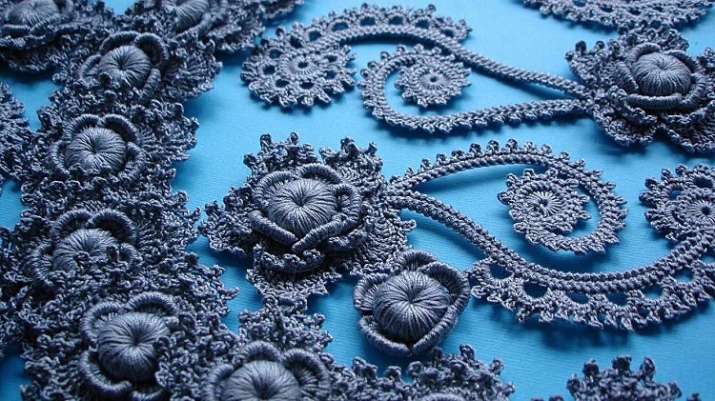
It all starts with three air loops, in the first of which a single crochet is made. Next, the lace is rotated 180 degrees clockwise, and a single crochet is again knitted in the loop on the left. Then we turn the lace again and knit it into two loops on the side. It is necessary to continue with the same turns.
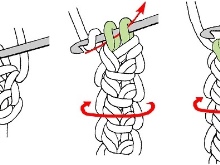


Sheet
Summer leaves resembling openwork patterns, or denser, voluminous leaves from an autumn oak grove - using the Irish lace technique, you can create a great many examples of the amazing flora.
If at first you will rely solely on the schemes, studying each of their elements, then later you will be able to draw up drawings in an independent order, and create unique motives based on them.

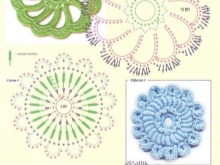

Curl
You can also use the caterpillar cord to create ornate elements., periodically slightly changing the direction of movement of the hook.This will create a curved curl that will be an unusual addition to the spreading flowers.
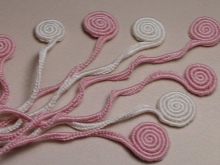
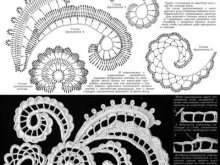

How to connect elements?
There are two ways to combine Irish lace motifs into a common fabric: using an irregular mesh and without it. If you turn to the second method, then it is enough to use ordinary sewing threads that fit the color palette. Or, for these purposes, you can use the tails of the motives that were left after the completion of work on each of them (this nuance must be thought out in advance and decide whether to leave the tails).
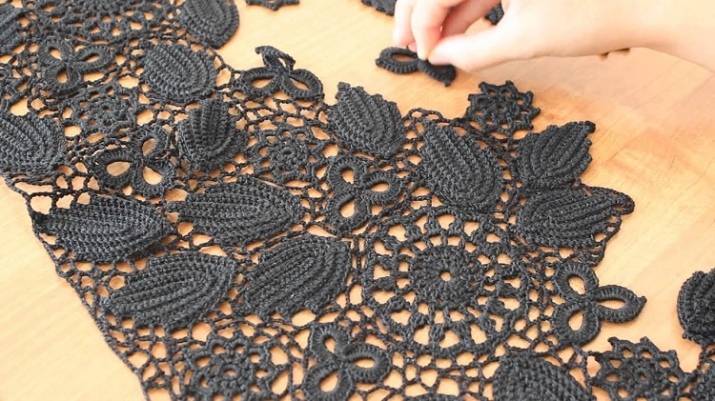
If you still decide to use an irregular mesh, then rest assured - it will give Irish lace a special charm and even more airiness. It is important to follow one important rule here: you need to attach not the elements to the grid, but the grid to the motifs (they should be laid out face down), and this should be done not by the edges of each of the parts, but to the back of these elements, then the work will turn out to be voluminous and will definitely please the owner.

What can be linked?
Perhaps the most popular options for what can be created using the Irish lace technique are all kinds of home decor elements. These can be unusual napkins for dressers and cabinets, bedding for banquets and armchairs. Such products will become a unique decoration for your home, create a cozy atmosphere and attract the attention of guests.
You can also pay attention to the great variety of patterns for making women's jewelry: unusual brooches, knitted earrings, different models of chokers with and without beads - all this will help dilute the monotonous image and give you a special charm.
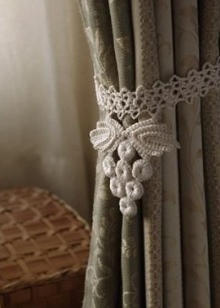
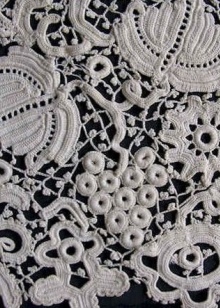
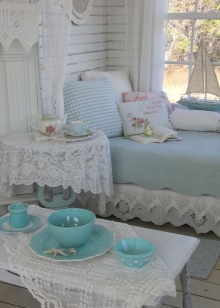
You can also pay attention to larger items of women's wardrobe. This is, for example:
- a white collar to create an accent on a black dress;
- summer openwork top in pastel shades;
- a jacket that can be successfully combined with a strict skirt and pumps;
- oversized cardigan, gently warming on cold winter evenings.

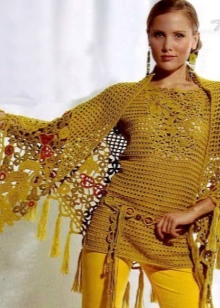
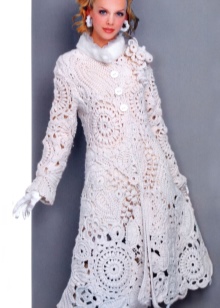
You can also consider options for creating stylish blouses and dresses, or even knit a coat using the Irish lace technique. Many women of fashion make a choice in favor of bags - unusual summer handbags of different sizes are obtained. The most unusual and difficult solution is knitting a wedding dress. The end result is a unique outfit that can become a real family heirloom.
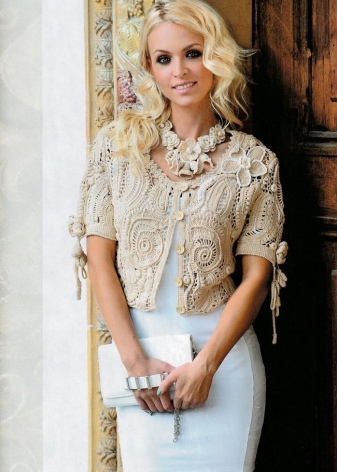
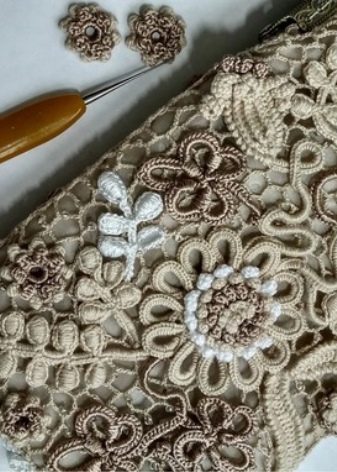
The Irish lace technique has a variety of options to choose from to create a unique piece. The fact that clothes or an element of the interior will stand out from others is guaranteed, and the rest is a matter of your imagination.
